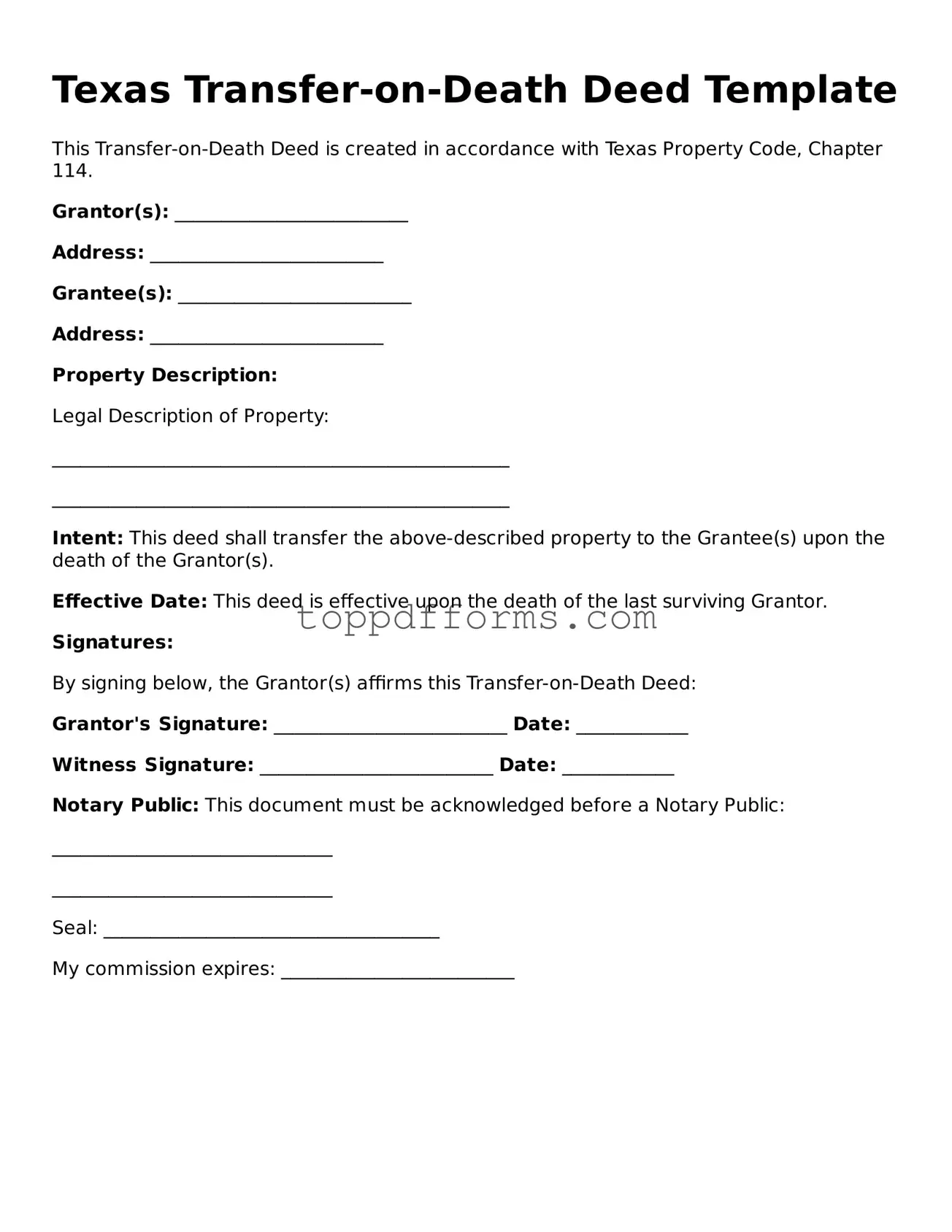What is a Texas Transfer-on-Death Deed?
A Texas Transfer-on-Death Deed (TOD deed) is a legal document that allows property owners to transfer real estate to designated beneficiaries upon their death, without the need for probate. This means that when the owner passes away, the property automatically goes to the beneficiaries named in the deed. This tool can simplify the transfer process and help avoid potential legal complications that often arise during probate proceedings.
Who can use a Transfer-on-Death Deed in Texas?
Any individual who owns real property in Texas can utilize a Transfer-on-Death Deed. This includes homeowners, landowners, and those holding title to real estate. However, it is important to note that the deed must be properly executed and recorded in the county where the property is located to be effective. Individuals should also consider their personal circumstances and consult with a legal professional to determine if this option is suitable for their estate planning needs.
How do I create a Transfer-on-Death Deed?
Creating a Transfer-on-Death Deed involves several steps. First, the property owner must fill out the deed form, which includes the owner's details, a legal description of the property, and the names of the beneficiaries. Once completed, the deed must be signed by the owner in the presence of a notary public. After notarization, the deed should be filed with the county clerk's office where the property is located. It is advisable to keep a copy of the filed deed for personal records.
Can I revoke or change a Transfer-on-Death Deed?
Yes, a Transfer-on-Death Deed can be revoked or changed at any time before the property owner’s death. To revoke the deed, the owner must create a new deed that explicitly states the revocation or file a formal revocation document with the county clerk. If the owner wishes to change the beneficiaries, they can do so by executing a new Transfer-on-Death Deed that supersedes the previous one. Proper documentation is essential to ensure that the new intentions are legally recognized.
What are the benefits of using a Transfer-on-Death Deed?
The primary benefit of a Transfer-on-Death Deed is the avoidance of probate, which can be a lengthy and costly process. By using a TOD deed, property owners can ensure that their beneficiaries receive the property quickly and without the complications associated with probate. Additionally, this method allows the owner to retain full control of the property during their lifetime, as the transfer only occurs upon their death. This flexibility makes the TOD deed an attractive option for many individuals planning their estates.
